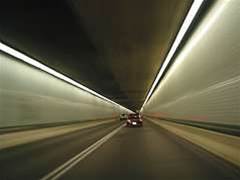Speaking at the 10th Biometrics Institute conference in Sydney, a research scientist with the DSTO's land operations division, Ian Graves, told delegates that improvements in image acquisition by facial recognition systems threatened to overwhelm human operators.

"Eight years ago I could have a camera pointed directly at me for a minute and there was no guarantee an image of me would be acquired," Graves said.
"Now if I stand here for 30 seconds, some systems will grab 50 or 100 images of me.
"We need to find a way to minimise the number of images that get passed onto the algorithm and through to the database. That doesn't mean we shouldn't still acquire 100 images of a subject, it just means we need to make sure only the best three or four get passed on."
Graves said systems can too easily be overloaded and their operators overwhelmed by the number of alarms that modern facial recognition systems can generate.
"If multiple images of someone are captured, and there are also multiple images of a person in the backend database, the system will come back with multiple matches," Graves said.
"The problem is that the operator only needs one match, meaning if you get 10 back, nine are wasted. It's also more work the operator has to do to receive the 10 alarms, which means less time to respond if they need to."
Graves also implored vendors to create systems that are able to cope with images that aren't high resolution or even those generated by a computer to be updated for age, or from an identikit.
"From our experience some recognition algorithms simply can't cope with anything but high quality images," he said.
"Some vendors don't seem to comprehend that high quality images won't always be available.
"I think we have to start developing techniques to make images with lower resolution, partial obscuring of the face, old photos, or those taken from CCTV more useful. In some cases it may be the only photo authorities have of that person."



_(20).jpg&h=140&w=231&c=1&s=0)
.png&h=140&w=231&c=1&s=0)






 iTnews Executive Retreat - Security Leaders Edition
iTnews Executive Retreat - Security Leaders Edition











_(1).jpg&h=140&w=231&c=1&s=0)



